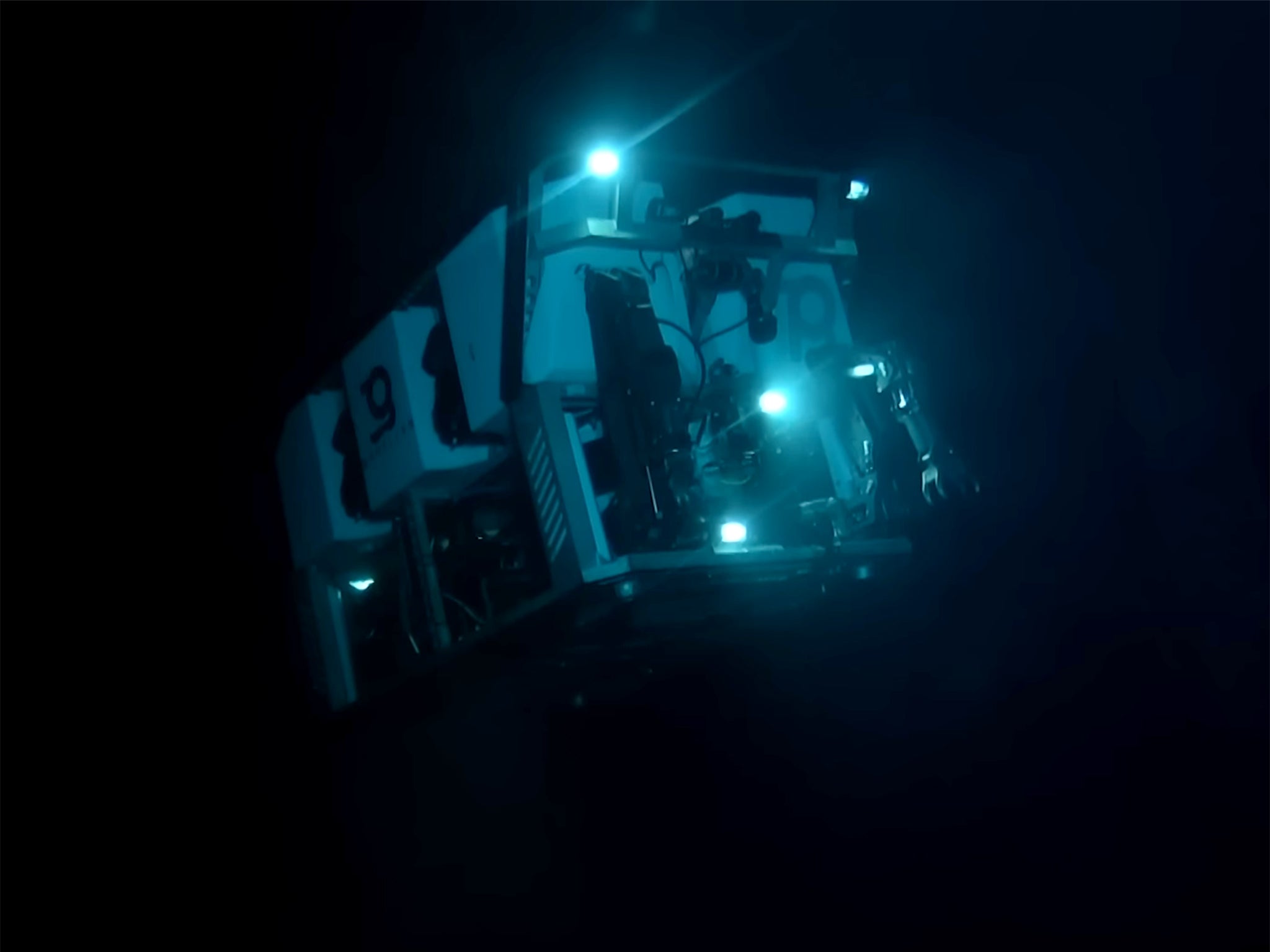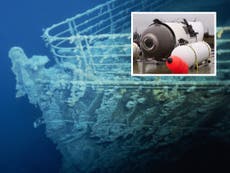US shoots down UK firm’s offer to help in search for Titanic sub as experts urge 11th-hour rethink
Urgent calls from explorers to reverse decision as ‘tapping sounds’ detected by sonar in search
Your support helps us to tell the story
From reproductive rights to climate change to Big Tech, The Independent is on the ground when the story is developing. Whether it's investigating the financials of Elon Musk's pro-Trump PAC or producing our latest documentary, 'The A Word', which shines a light on the American women fighting for reproductive rights, we know how important it is to parse out the facts from the messaging.
At such a critical moment in US history, we need reporters on the ground. Your donation allows us to keep sending journalists to speak to both sides of the story.
The Independent is trusted by Americans across the entire political spectrum. And unlike many other quality news outlets, we choose not to lock Americans out of our reporting and analysis with paywalls. We believe quality journalism should be available to everyone, paid for by those who can afford it.
Your support makes all the difference.The US Coastguard has rejected an offer of help from a UK firm which experts say may provide the "best hope" of finding the missing Titanic submarine, as the window of opportunity to rescue the five onboard rapidly closes.
British company Magellan Limited has had a deep-sea submersible craft “ready to support” the rescue mission since early on Monday, with the ability to reach depths of 6,000 metres and prior experience of visiting the Titanic wreckage site.
But the US First Coast Guard District told The Independent it has not requested assistance from the firm as the vessel, currently sat on a plane awaiting US clearance to be deployed, is too far away.
The frantic search for the vessel lost in the depths of the Atlantic Ocean is now in its third day and oxygen is expected to run out at around 10am on Thursday UK time.
The US First Coast Guard District said after “careful consideration” of the most effective resources available, the unified command - the US Coast Guard, US Navy, Canadian Coast Guard and OceanGate Expeditions - is “not planning on requesting Magellan” because of “how far out that vessel would be from the area needed”. It added the command would “probably not” reverse its decision.

However, experts have suggested to The Independent that Magellan’s vessel could still make it to the search site before the submarine’s air supply is expected to run out. Although the longer the wait, the less likely this becomes, hence a reversal of the US Coast Guard’s decision is time critical.
Magellan said it had been contacted by OceanGate, the company that organised the Titanic tourist expedition, early on Monday and “immediately” offered its services, saying: “We are ready to support, and we are fully mobilised to help.”
The US Coast Guard decided against deploying Magellan’s vessel at the point at which the company offered its services, over two days ago, again citing its distance from the search site as the reason for this decision.
Two of the stranded five - British billionaire explorer Hamish Harding and French diver Paul-Henri Nargeolet - are members of The Explorers Club, a community of experienced explorers. The group has issued a desperate plea to the US government to deploy “the ROV with the most experience at the Titanic site and possibly the best hope for a rescue”.
The wreckage sits at a depth of around 3,810 metres, but the group has said the vessels currently being deployed at the site only reach depths of 3,000 metres. The submarine the US Coast Guard confirmed had been deployed at the site, Deep Energy, is only rated to a depth of 3,000 metres.
The Explorers Club said it has been in contact with top government officials, ”turning every stone”, urging them to “give the green light and get Magellan to the site as soon as possible”. It said it had also been in close contact with Magellan, who “are ready to deploy and every second now counts”.

Their pleas are all the more urgent following the glimmer of hope that came with reports from the US Coast Guard that a Canadian aircraft searching for the submarine detected intermittent “banging” noises from the vicinity of its last known location.
The crew heard banging sounds every 30 minutes on Tuesday and again on Wednesday after additional sonar devices were deployed. However, the US Coast Guard clarified that they “don’t know the source of the noise”.
The President of The Explorers Club Richard Garriott shared a letter with his community, citing reports “tapping sounds” had been detected by sonar, “implying that crew may be alive and signalling”.
The letter shared with The Independent by Professor Mark Hannaford, a member of the group and founder of World Extreme Medicine, read: “It is essential to the survival of the crew that these assets [Magellan’s vessel] are brought in, NOW!”

It added the submarines currently at the site “are not rated for the depth of the submersible and subsequently MAY NOT WORK”.
Mr Hannaford, who is close friends with Mr Harding, said: “Putting yourself in their shoes is incomprehensible, especially for the families. It’s very hard to imagine people you know in that situation - and what they’re likely to be going through.
“But Hamish is so accomplished, extremely bright, a great pilot and engineer - if there’s anybody who can fix their way out of this situation, Hamish is one of them.”
Alongside the pair on the OceanGate Expeditions’s submersible Titan are CEO and founder of OceanGate Expeditions Stockton Rush, and Pakistani businessman Shahzada Dawood and his 19-year-old son Suleman Dawood.
The massive search and rescue operation in a remote part of the North Atlantic is entering its final hours after the submersible vessel has been missing for over three days.
The watercraft submerged on Sunday (18 June) morning with its support vessel, the Canadian research vessel Polar Prince. About an hour and 45 minutes later, the Titan lost contact with Polar Prince, authorities said. The Titan is equipped with a four-day emergency oxygen supply.
The wreck of the Titanic, a British ocean liner that struck an iceberg and sank on its maiden voyage in April 1912, lies about 900 miles (1,450 km) east of Cape Cod, Massachusetts, and 400 miles (644 km) south of St John’s, Newfoundland.



Join our commenting forum
Join thought-provoking conversations, follow other Independent readers and see their replies
Comments